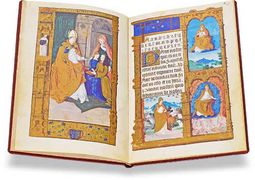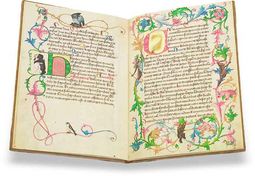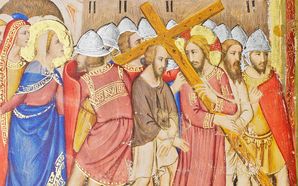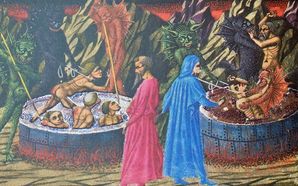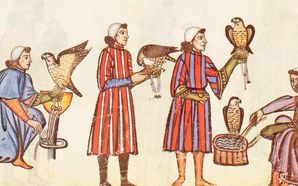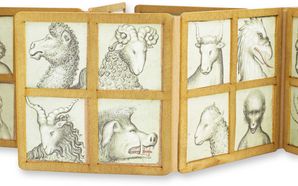Primers and Textbooks
Created for the education of young princes and princesses, illuminated primers are among the rarest manuscripts to survive the Middle Ages. In a time when book production was prohibitively expensive, most primers were simple workbooks to guide medieval students, who learned largely through memorization and recitation.
Thus, an illuminated primer was a true luxury and was usually only created for the children of royal families like Claude de France or Emperor Maximillian I. They typically give an introduction to the alphabet along with important prayers and various sayings meant to give the young pupil a foothold in their education.
Some of the finer specimens thereof were created by great masters and are in no way inferior to contemporary commissions for adult recipients. More advanced primers usually contained biblical texts and classical authors like Virgil were presented as paragons of Latin grammar. General reference works were also common, ranging from broad encyclopedias to guides for medical self-treatment to textbooks on the art of making love. These instructive texts offer a unique glimpse into the medieval mindset and worldview.
Demonstration of a Sample Page
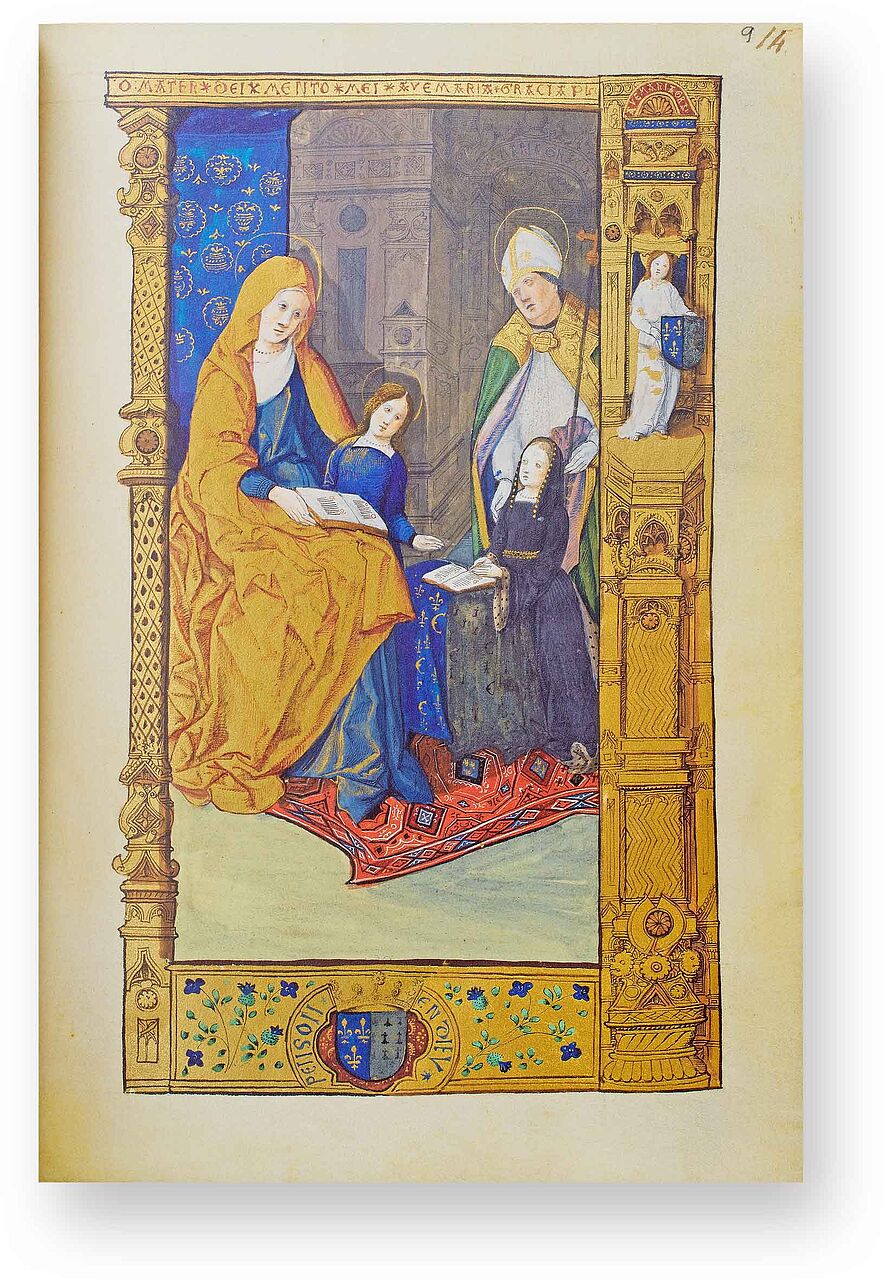
Primer of Claude de France
Claude de France Praying to Saint Anne
Claude de France, stylishly clad in a fur-trimmed black dress, is presented by St. Claude to the enthroned St. Anne, who is teaching Virgin Mary to read. Both Claude and Mary are depicted as young girls. A blue and silver cloth embroidered with fleurs-de-lis and “C” initials in gold and black covers Claude’s desk, where she follows the lesson.
Primers were very individualized, containing not only rare medieval portraits of children, but also their patron’s personal details. Often a close friend or tutor, in this case the primer was created at the behest of her mother, Anne de Bretagne. Her coat of arms is held by an angel standing to the right in the architecture of the frame and surrounded by her motto – PESNON EN DIEU – at the bottom.

